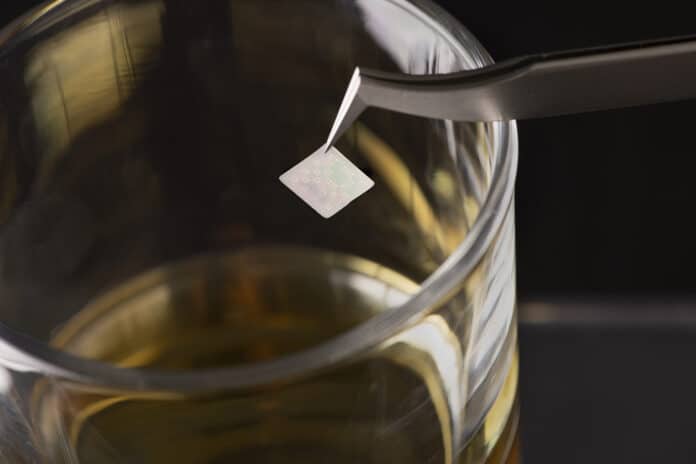A team of biomedical engineers from Purdue University and the National Institute of Agricultural Sciences in South Korea has developed an edible QR code on a tag made of specialized silk that could help consumers detect fake whiskey. This new anticounterfeiting technology could be a step toward not only finding a solution for the alcohol industry but also addressing fake medications.
“Counterfeit items, such as medicines and alcohol, are big issues around the world. There are numerous examples of large amounts of fake medications sold throughout the world, which, in some instances, kill people,” said Young Kim, associate head for research and an associate professor in Purdue’s Weldon School of Biomedical Engineering.
Kim and his team created the tags by processing fluorescent silk cocoons from specialized silkworms to create a biopolymer, which can be formed into a variety of patterns to encode the information. They then placed tags in various brands and price points of whiskey over a 10-month period and were able to continually activate the tags and codes with a smartphone app to determine the product’s authenticity.
The code on the fluorescent silk tag is the equivalent of a barcode or QR code and is not visible to the naked eye. Thankfully, these tags are also fully edible and digestible, causing no issues if a person swallows them while downing a shot of whiskey. They don’t affect the taste of the whiskey at all.
“Alcohol spirts are vulnerable to counterfeiting. There are a lot of fake whiskeys being sold,” Jungwoo Leem, a member of the research team, said, referencing other studies mentioned in the journal article about the economic cost and loss of purchasing fake alcoholic spirits, including how 18% of adults in the United Kingdom experienced purchasing counterfeit alcoholic spirits.
“Counterfeit items, such as medicines and alcohol, are big issues around the world. There are numerous examples of large amounts of fake medications sold throughout the world, which, in some instances, kill people,” said Kim.
Kim said the tags are an additional authentication mechanism for marked safety seals on bottles or pills and could help by being placed in high-dollar bottles of alcohol or on expensive medications individually.
